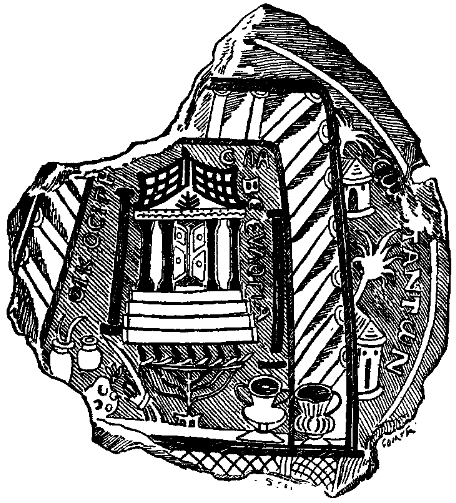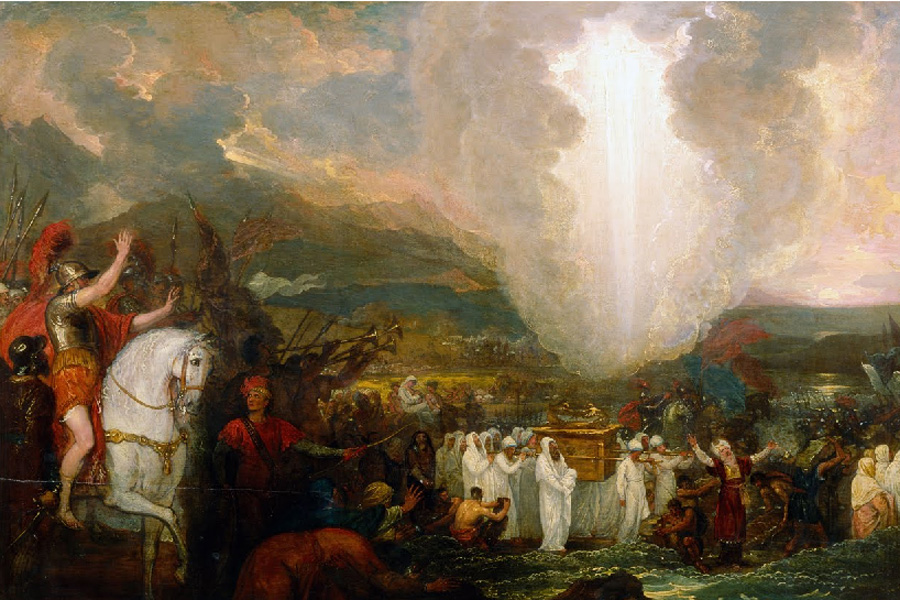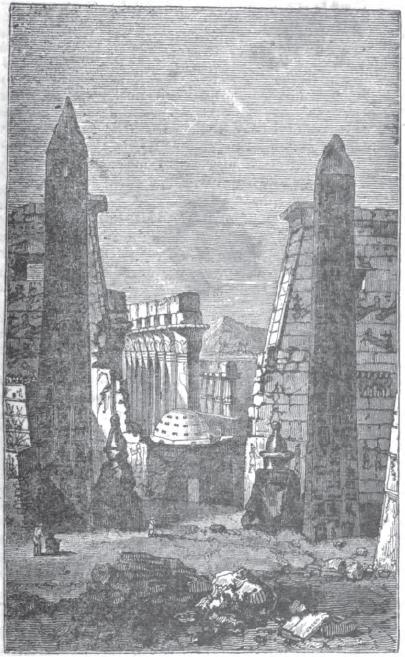For the front of the temple he made two pillars, which together were thirty-five cubits long, each with a capital five cubits high. He made interwoven chains and put them on top of the pillars. He also made a hundred pomegranates and attached them to the chains. He erected the pillars in the front of the temple, one to the south and one to the north. The one to the south he named Jakin and the one to the north Boaz. – II Chronicles 3:15-17

Image of a 3rd-century glass bowl depicting Solomon’s Temple and the twin pillars, Jachin and Boaz.
We often hear the question: “What is a Freemason?” The answer, of course, is that a Freemason is many things – Brother, mentor, friend, and father, to name a few. At his core, however, a Freemason is a man of integrity, dedicated to upholding our fraternity’s core values of Brotherly Love, Relief, and Truth. These three pillars define the character of a Freemason and are the structural bulwarks upon which our brotherhood is built. But they are not the only pillars of significance within the craft.
Masons across the globe gather in lodge rooms to perform ritual, enjoy camaraderie, and discuss the labors ahead. Most lodge rooms are alike in their configuration, but each has its unique character. Prominent symbols from Masonic teachings are often on display, such as the well-known Square and Compasses. In many lodges, particularly in the United States, it is common to see the twin pillars, Jachin and Boaz, affixed in the lodge room. They have become prominent symbols in the craft, appearing not only in the lodge but also in Masonic art and buildings.

Joshua passing the River Jordan with the Ark of the Covenant, 1800, by Benjamin West.
Abrahamic Pillars
Like many Masonic symbols, the twin pillars employed in ritual today are derived from ancient Hebrew and Biblical allegories. An early employment of the pillars can be found in the first book of Antiquities of the Jews by the Jewish historian Flavius Josephus. In this text, Josephus explains how Enoch used two pillars to protect the knowledge Adam foretold of the destruction of the world, once by fire and again by flood. Enoch placed the knowledge in a pillar of brick to protect from the fire and a stone pillar to protect from the flood. Masonic ritual makes direct reference to using pillars to store and protect knowledge.
Later, two pillars appear in the Book of Numbers, guiding Moses and the Israelites through the desert into the promised land. The pillar of cloud appeared and guided the Israelites during the day, while a pillar of fire showed the way at night. Throughout the texts of the Abrahamic religions, pillars reflected the knowledge of man as it was shared by the Great Architect.
Ancient Egyptian Obelisks
As early as 3150 BCE, the ancient Egyptians created the obelisk, a rectangular stone pillar with a pointed top, in celebration and honor of the gods. Over the centuries, they became principally linked with Ra, God of the sun and father of all Egyptian deities. In deference to the Egyptian value of balance and harmony, obelisks were always raised in twos, often outside a temple in honor of the gods or to honor the achievements of a great king or pharaoh. While few of these structures still stand today, the craftsmanship required to construct and erect these magnificent pillars is inspiring.

The 3,000-year-old Luxor Obelisks before removal, 1832
King Solomon’s Temple
As any Master Mason knows, a lodge is built as a functional representation of the craft and the lodge room is oriented as a reflection of the Temple of King Solomon. In the bible, two prominent pillars are described as guarding the Temple’s entrance: Boaz and Jachin. The text of 1 Kings Chapters 6-7 illustrates how the master builder and prominent Masonic figure Hiram Abiff erected these twin pillars:
15 He cast two bronze pillars, each eighteen cubits high and twelve cubits in circumference. 16 He also made two capitals of cast bronze to set on the tops of the pillars; each capital was five cubits high. 17 A network of interwoven chains adorned the capitals on top of the pillars, seven for each capital. 18 He made pomegranates in two rows encircling each network to decorate the capitals on top of the pillars. He did the same for each capital. 19 The capitals on top of the pillars in the portico were in the shape of lilies, four cubits high. 20 On the capitals of both pillars, above the bowl-shaped part next to the network, were the two hundred pomegranates in rows all around. 21 He erected the pillars at the portico of the temple. The pillar to the south he named Jakin and the one to the north Boaz. 22 The capitals on top were in the shape of lilies. And so the work on the pillars was completed.
In Freemasonry, the building of Solomon’s Temple is a vital allegory from which we derive much of our symbolism and philosophy. Given Boaz and Jachin’s prominent placement defending the temple, it is no surprise they have come to own such an essential place in Masonic teachings of the craft.
Pillars in Modern Freemasonry
While there is no standardized use of physical columns within Freemasonry today, it is common to see twin pillars represented in Masonic lodges throughout the world. In England, the pillars are typically placed in front of the Worshipful Master’s chair, but a myriad of placements can be found in American lodges. In the first U.S. lodges, the two pillars typically stood near the Wardens seated in the west, requiring candidates to pass through them. Today, however, the two pillars are placed in the northwest corners near the candidate’s preparation room in certain lodges and others place them in the south by the Master’s chair. While the physical placement of the columns might vary by lodge, what remains consistent is the vital roles the two pillars play in Masonic ritual, particularly within the Fellowcraft lecture.
Reflecting on the significance of pillars throughout history and within some of humanity’s more cherished texts, it is easy to be overcome with a sense of awe. From ancient civilizations to the newest lodge rooms, men have gazed upon these columns and felt closer to The Great Architect. Let us all use these symbols to attain more insight into the Universe so that we might better live up to our core values as Freemasons.
If you enjoyed this article, check out other posts in our series on Masonic symbols. We recommend The Eye of Providence, King Solomon’s Temple, or The Blazing Star.